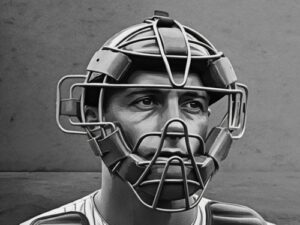Here we are back with the second installment in a series called “Greatness Score,” a system I devised to help rate the candidacy of players for the Baseball Hall of Fame. In the first article, I introduced the system and looked at first basemen and second basemen.
Here’s a quick snapshot of the system:
- 4 WAR season is worth 4 points
- 5 WAR season is worth 6 points
- 6 WAR season is worth 8 points
- 7 WAR season is worth 10 points
- 8 WAR season is worth 12 points
- 9 WAR season is worth 16 points
- 10 WAR season is worth 20 points
Add them all up and you get Greatness Score. Basically anything over 50 points and you’re a good candidate for the Hall of Fame. However, the system is designed to measure “greatness” and doesn’t factor consistency and longevity. So, some good candidates are impacted by that bias. But I’ll comment on that with each player I highlight.
Here’s the chart for shortstops.
[table “” not found /]The best way to explain how these numbers work is to add a comment for players that need an explanation or special note.
Wagner and ARod
Both Honus Wagner and ARod have nearly twice as many 8+ WAR seasons as Cal Ripken Jr., yet we still have Ripken ranked as the greatest shortstop ever because (1) era adjustments and (2) cheating.
Arky Vaughan
People don’t realize how great Arky Vaughan was. He was a superb fielding shortstop with a strong arm, but he was an even better hitter. Like Johnny Mize, who I mentioned is underrated when I analyzed the first basemen last week, Arky’s career was split by an absence (his when he retired rather than play for the scoundrel Leo Durocher).
Vaughan is probably the most anonymous baseball legend in history.
George Davis
Davis gets forgotten too, probably because he last played a game in 1909. But by greatness, he rates ahead of Ozzie Smith, Derek Jeter, and Barry Larkin, to name a few. He is underrated offensively because he was a slugging shortstop when games were typically decided 2-1.
Ozzie & Tram
Analytics has Ozzie slightly ahead of Trammell, and it’s clear he had a more valuable career, though not by much. But seeing their names together on this chart reminds me of what Dick Tracewski said about the two of them before Trammell was elected to the Hall of Fame.
“No one in baseball, when they were in their primes, would have traded Trammell straight up for Ozzie,” Tracewski said. And he was right.
Dahlen for the Hall of Fame
Dahlen and Barry Larkin have nearly identical season lines by WAR. Larkin had one more MVP caliber season, but Dahlen had more 4+WAR seasons, 10-9. By the way his last name is pronounced DAL-LEN, as in rhymes with Allen.
In a tumultuous 21-year career that bridged the old world 19th century game to the deadball era of the early part of the 20th century, Bill Dahlen* was a force of nature. No other player of his time was ejected from as many games, had as many fights with people who were supposed to be his friends, or burned more bridges. Through it all, Bad Bill was a wonderful ballplayer.
Many of baseball’s better players of the Gilded Age came from New York, and Dahlen was an archetype. He was born in Nelliston in upstate New York, a tiny little smattering of families that totaled no more than 400 in 1870 when baby William arrived to German-American parents. Nelliston was only about 25 miles northeast of Cooperstown, the future spiritual home of baseball and the host to the National Baseball Hall of Fame and Museum.
Dahlen was a rambunctious youth and an angry drunk. His aggressive nature got him into trouble many times. He even found trouble when he wasn’t playing baseball. During a hunting trip to Minnesota one offseason, Dahlen and a teammate were arrested when they shot a mule, mistaking it (apparently) for a deer or a moose. Sitting in a jail cell awaiting an arraignment by a “country judge,” Bill was interviewed by a local reporter, and said, “I don’t have time to check what they are, I just aim and shoot.” Dahlen was let go after reimbursing the farmer for the loss of his mule.
You know all those fights and controversies that Billy Martin got into? Bad Bill Dahlen did all of that first. One year he punched a loudmouth heckler in the middle of a game. Another time, on an afternoon when an umpire was making a lot of calls that went against his team, Dahlen hit a single. On the ensuing play, instead of sliding into second base, Dahlen slid into the umpire several feet away. That incident earned him a fine.
Dahlen played for four National League teams, wearing out his welcome after a few years in each city. His most controversial stay was in Brooklyn, where he flummoxed team owner Charles Ebbets with his salary demands, disputes with his managers and teammates, and never-ending war with umpires. “I only know one creature who crawls lower than the snake,” Dahlen was reported to have said, “and it calls balls and strikes.”
When he wasn’t fighting or spitting tobacco juice at an enemy, Dahlen was a good player. His range at shortstop was said to be the best in the game, and his defensive statistics are by far the most glowing of any man who played the position in the 19th century. He hit enough to be a pest, and led the league one season in runs batted in. He also swiped more than 500 bases. As advanced statistical analysis emerged in the early 21st century, Dahlen has become one of the favorite candidates as the most deserving Hall of Fame candidate from the 19th century.
The same year he turned 40, in 1910, Dahlen was welcomed back to Brooklyn to manage the team. Somehow, he and Ebbets mended their differences. For the next four seasons, Bill guided a mediocre team to a decent record. But he still abused umpires, earning at least four suspensions during his tenure as skipper of the Brooklyn club.
After he was replaced as manager by Wilbert Robinson, Dahlen became one of the biggest Dodgers fans in Brooklyn He remained in the borough for the rest of his life, constantly exhorting his former team toward success, hopeful that they would finally win a championship. Unfortunately, Bad Bill died in 1950 at the age of 80, five years before his beloved Dodgers finally won the World Series.
His career Defensive WAR is 11th all-time, regardless of position. He also rates in the top 90 all-time on Offensive WAR. Overall his 75.2 WAR is 50th all-time among position players. So, yeah it’s pretty much a travesty that the Hall of Fame hasn’t recognized this long-forgotten star.
Born just a stone’s throw from Cooperstown, Dahlen deserves his plaque on the quality and breadth of his career.
The Case for Glasscock
So, if Dahlen deserves his day in Cooperstown, what about Glasscock, who rates just behind Dahlen in Greatness Score (60-56)?
Glasscock had fewer excellent seasons, and his career WAR is significantly below that of Dahlen (75 to 60, roughly).
He was every bit as good as Dahlen in the field, but not on par with him offensively. Still, many baseball historians consider “Pebbly Jack” to be the best shortstop whose career was encompassed in the 19th century.
The chance that a committee will snatch Glasscock from the obscurity of history and award him with a Hall of Fame nod are about the same as Donald Trump admitting he lost the presidential election.
Nomar and Jeter
Nomar Garciaparra had twice as many 6+ WAR seasons as Derek Jeter (6 to 3), but their legacies are much different, obviously. That’s why Greatness Score should be used as part of an overall analysis of the candidacy of a player. Clearly, Nomar was the better player at his peak, but Jeter had lots of good seasons (eight of 4+ WAR level, as opposed to six by his rival). Then, Nomar had very little else after that, no filler. He was an MVP candidate or he was invisible, for the most part.
There hasn’t been anyone like Garciaparra elected to the HOF at the shortstop position: sort of a Dick Allen type career of very high highs and a few All-Star years, then nothing. Actually, Allen’s credentials are even better than those of Garciaparra.
I don’t think we’ll ever see Garciaparra get a plaque.
Campy, Belanger, Concepcion, and Omar
These four get lumped together a lot. There are many who will tell you that they never saw a shortstop make the plays that Vizquel could make. I don’t disagree with that.
Belanger and Campaneris and Davey Concepcion played for three dynasties, and each has about the same argument: low peak, but long career with many good seasons for great teams. If I had to induct one of those three into the Hall, I would select Campaneris, who did lots of things like lead the league in steals many, many times. His team also won three straight titles, which trumps Concepcion.
With the recent revelations about Omar Vizquel’s off-field problems with domestic violence, I don’t think he’ll ever get elected. He was gaining momentum on the HOF ballot, but we should see that reversed when the 2022 election results are announced next January.






